Chapter: 11th Food Service Management : Chapter 6 : Food Preservation
Salting and Pickling
Salting
and Pickling
Salting
Salt is added to enhance taste
and extend shelf life in foods such as butter, cheese,
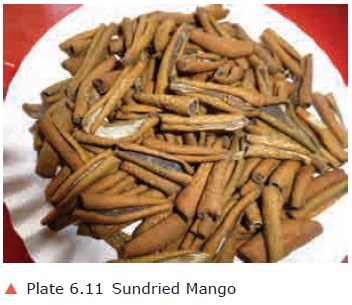

Pickling
It is also an ancient preservation tech-nique. The preservation of
fruits and vegetables using common salt, vinegar, oil and spices are referred
to as pickling. The layer of oil that floats on the top of pickles prevents the
entry and growth of microorganisms like moulds and yeast. Spices like turmeric,
pepper, chilli powder and asafoetida retard the growth of bacteria. Vinegar
provides an unfavorable acidic environment for microbial growth. The salt added
absorbs water and prevents the growth of micro-organisms.
Pickles are good appetizers. They
add palatability to the meal. They help in digestion by stimulating the flow of
gas-tric juices. The nutritive value of the pick-les varies depending on the
raw materi-als and methods of preparation adopted. Raw mangoes, lemon, amla,
ginger, garlic, tomato, chilli, mixed vegetables such as potato, carrot, beans,
peas, cauliflower are used to prepare pickle.
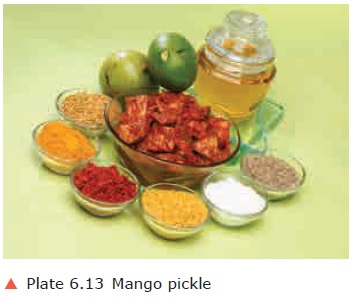
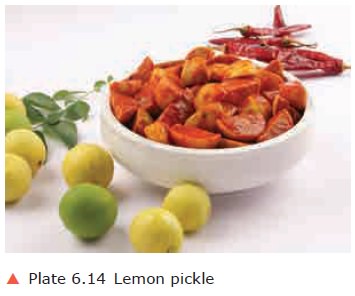
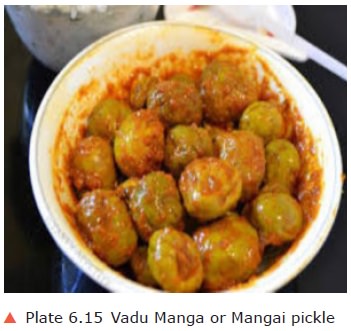
I. Common Ingredients used for Pickling
a. Salt: Common salt
is used for pickling. Salt should be free from lime (Ca CO3) as it
reduces the acidity of the vinegar in which brined vegetables are packed.
Vegetables do not ferment when they are strongly brined by large quantity of
salt. Spoilage of pickle is prevented by adding sufficient amount of common
salt.
b. Vinegar:
Vinegar acts as a preservative. To avoid dilution of the vinegar by the water
liberated from the tissues, the vege-tables are generally placed in strong
vine-gar of about 10 per cent acidity for several days before pickling.
c. Sugar: Sugar used in
the preparation
of sweet pickles should be of high quality. Sugar helps in the
preservation of prod-ucts in which it is used.
d. Spices: Spices are
generally added to all the pickles but the quantity added depends
upon the kind of fruit or vegetable taken and the kind of flavour desired.
Spices generally used are cardamom, dry chillies, cinnamon, clove, coriander
seeds, pepper, turmeric, mustard, cumin and fenugreek seeds. Condiments such as
ginger, garlic, mint, curry leaves and asafoetida are used. Spices are used
either in the fresh or in the dry powder form.
e. Water: Only potable
water should be
used for the preparation of brine. Hard water interferes with the
normal salt cur-ing of the vegetables.
f.
Colouring and Hardening Agent: Natural colouring agent, turmeric is com-monly used
in pickles, sauces and ketchups. Artificial colours are not generally added to
pickle, although used at permis-sible limits. Alum is sometimes used to give
firmness to the vegetables used for pickling.
II. Types of Pickles
There are five types of pickles.
Salt
Pickles: Salt pickle adds taste to food and enhances digestive ability. The method
of preparation involves addition of salt to vegetable and fruit pieces and
allowing it to soak.
Spiced
Pickle: This type of pickle is tastier since oil and spices are added for
seasoning and preservation. Spoilage of
III. Types of Spoilage in Pickles
pickle is prevented by the
addition of salt and spices.
![]()
Pickles
Preserved by Lemon Juice: Vegetables and garlic pickles made with lime juice
adds taste.
Vinegar
Pickle: Vinegar is a dilute acetic acid. Vinegar is used as a
preserv-ative for preparing tomato sauces, tomato pickle, chilli sauce and meat
pickle.
Sweet Pickle: Sweet pickle is pre-pared by adding garam masala powder and
sugar to fruits and sweet vegetables. Vegetables and fruits should be soaked in
sweet vinegar and boiled for 5 to 6 minutes and mixed well, cooled and packed
in the jar.
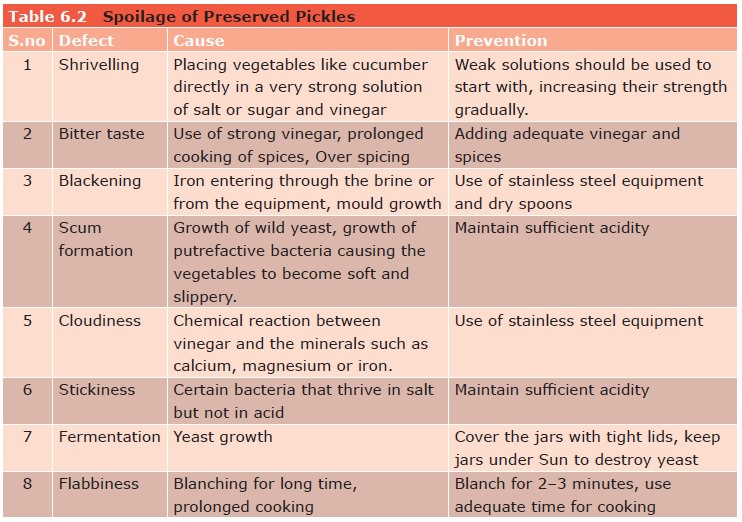
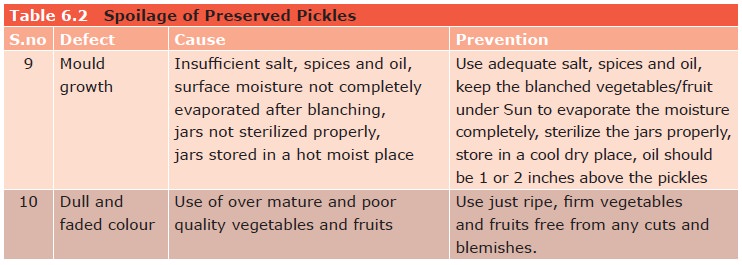
Related Topics